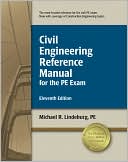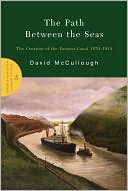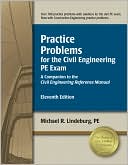Mechanical Shock, Vol. 2
About the Series:\ This important new series of five volumes has been written with both the professional engineers and the academic in mind. Christian Lalanne explores every aspect of vibration and shock, two fundamental and crucially important areas of mechanical engineering, from both the theoretical and practical standpoints. As all products need to be designed to withstand the environmental conditions to which they are likely to be subjected, prototypes must be verified by calculation...
Search in google:
About the Series: This important new series of five volumes has been written with both the professional engineers and the academic in mind. Christian Lalanne explores every aspect of vibration and shock, two fundamental and crucially important areas of mechanical engineering, from both the theoretical and practical standpoints. As all products need to be designed to withstand the environmental conditions to which they are likely to be subjected, prototypes must be verified by calculation and laboratory tests, the latter according to specifications from national or international standards. The concept of tailoring the product to its environment has gradually developed whereby, from the very start of a design project, through the to the standards specifications and testing procedures on the prototype, the real environment in which the product being tested will be functioning is taken into account. The five volumes of Mechanical Shock and Vibration cover all the issues that need to be addressed in this area of mechanical engineering. The theoretical analyses are placed in the context of the real world and of laboratory tests - essential for the development of specifications. Vol II: Mechanical Shock This volume considers the shock response spectrum, its various definitions, its properties and the assumptions involved in its calculation. In developing the practical application of these concepts, the shock shapes most often used with test facilities are presented, togther with their characteristics and indications of how to establish test configurations comparable with those of the real, mesured environment. There follows a demonstration of how to meet these specifications using standard laboratory equipment - shock machines, electrodynamic exciters driven by a time signal or a response spectrum - with discussion of the limitations, advantages and disadvantages of each method.
Introduction List of Symbols 1. Shock Analysis2. Shock Response Spectra Domains 3. Characteristics of Shock Response Spectra4. Development of Shock Test Specifications5. Kinematics of Simple Shocks 6. Standard Shock Machines 7. Generation of Shcok using Shakers 8. Simulation of Pyroshocks 9. Control of a Shaker using a Shock Response Spectrum Appendix. Similitude in Mechanics Mechanical Shock Test: A Brief Historical Background Bibliography Index Synopsis of Five Volume Series








